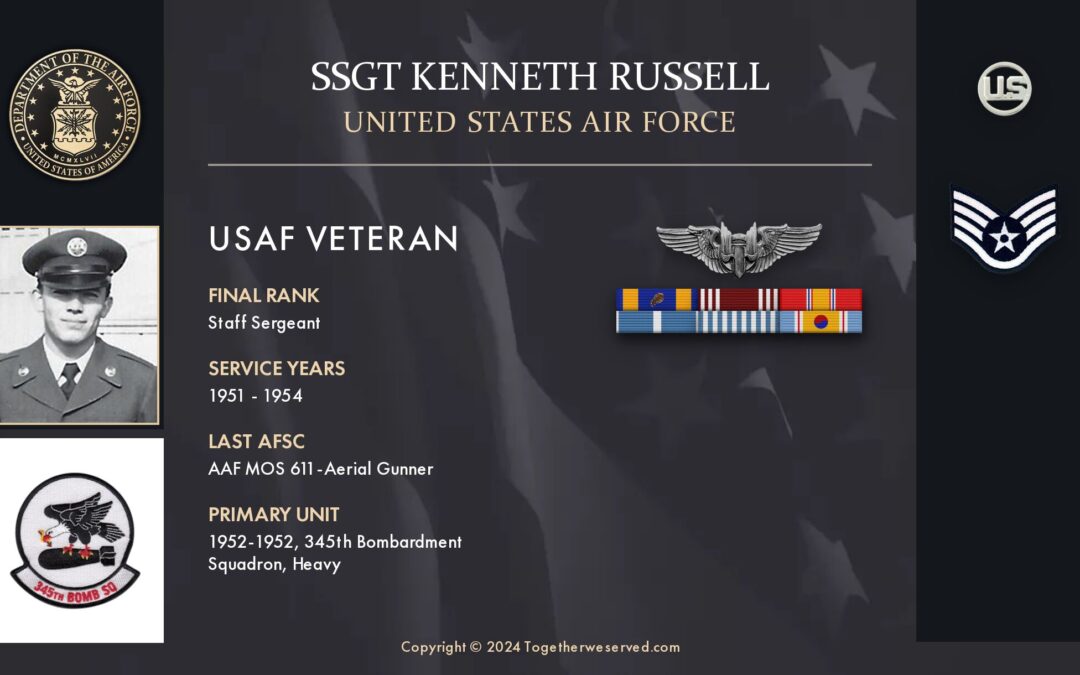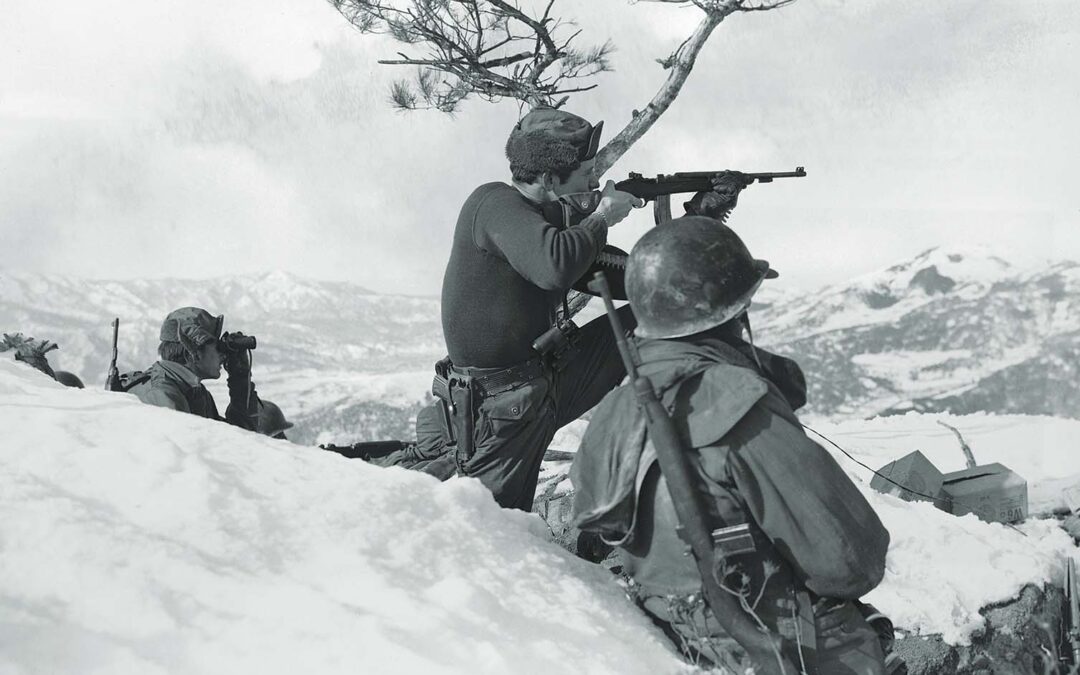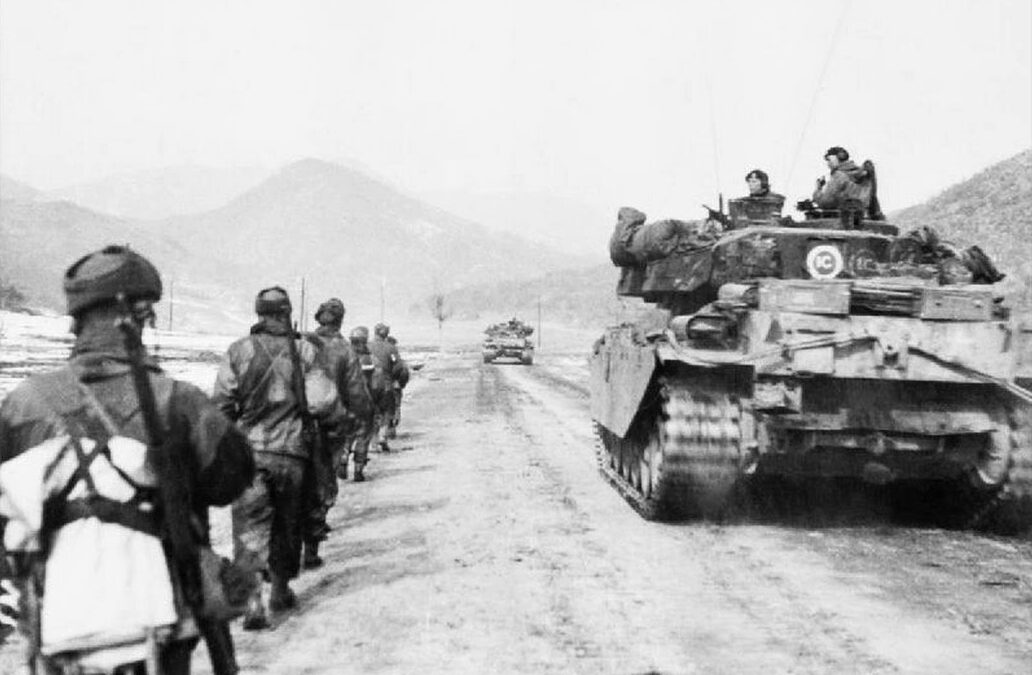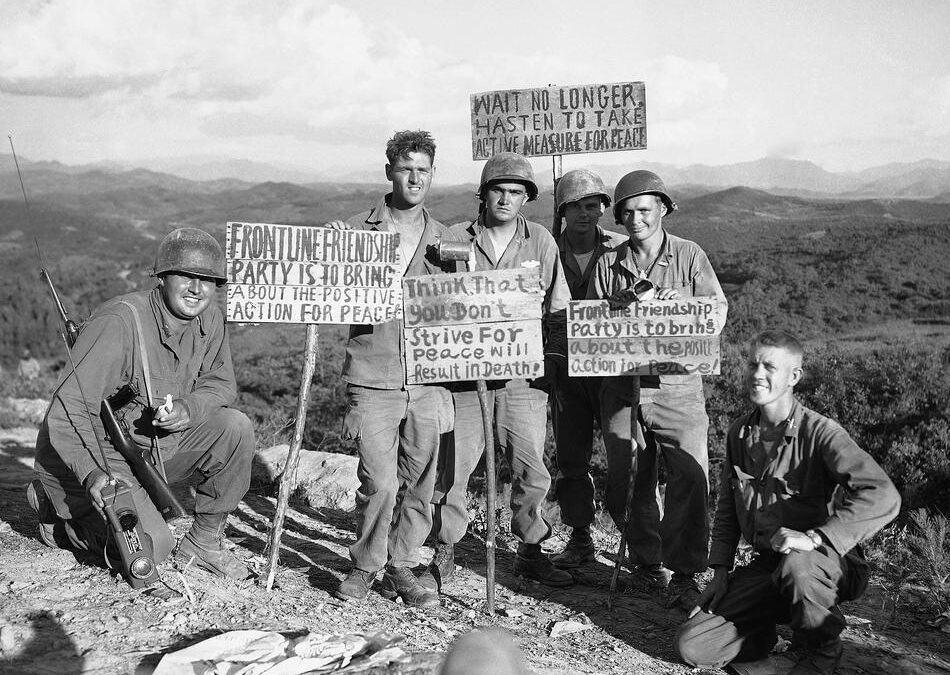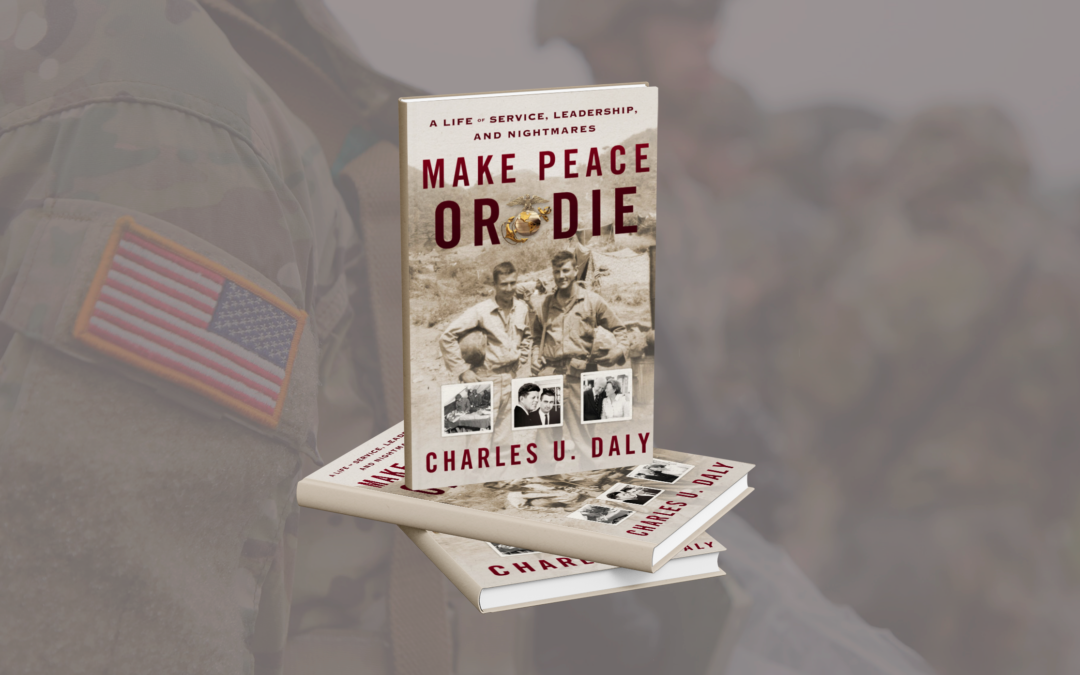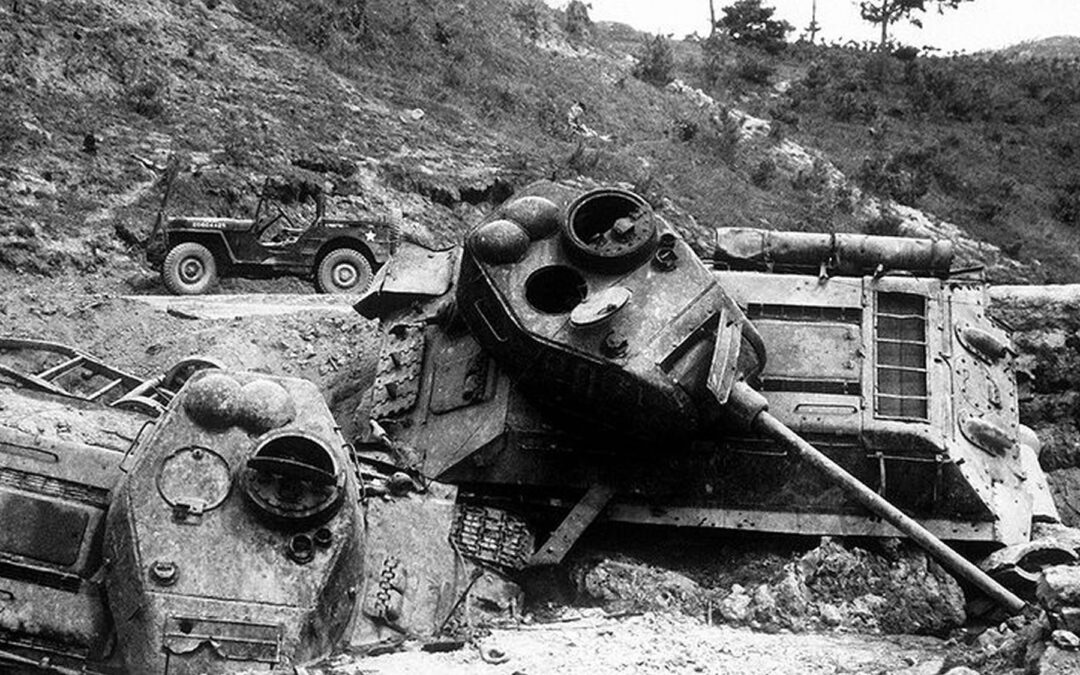PRESERVING A MILITARY LEGACY FOR FUTURE GENERATIONS The following Reflections represents SSGT Kenneth Russell's legacy of his military service from 1951 to 1954. If you are a Veteran, consider preserving a record of your own military service, including your memories and photographs, on Togetherweserved.com (TWS), the leading archive of living military history. The following Service Reflections is an easy-to-complete self-interview, located on your TWS Military Service Page, which enables you to remember key people and events from your military service and the impact they made on your life. Start recording your own Military Memories HERE. Please describe who or what influenced your decision to join the Air Force. My draft number was coming up, and I preferred the Air Force over the Army. The Korean War was on, and it looked like I would be drafted, so I enlisted in the Air Force in Salt Lake City, Utah, in January 1951. My basic training took place at Lackland AFB, Texas, but it was...
